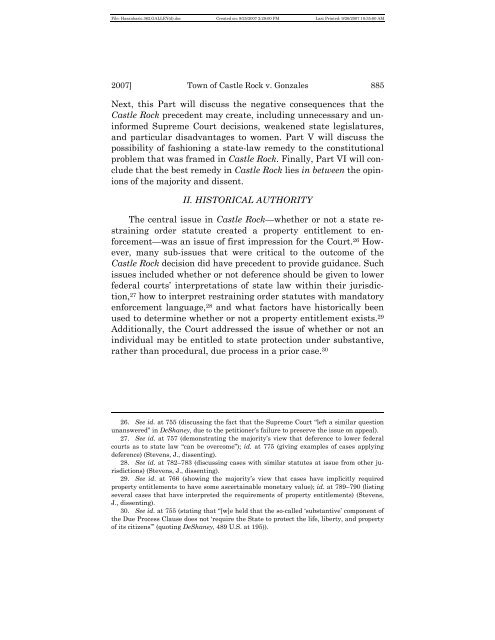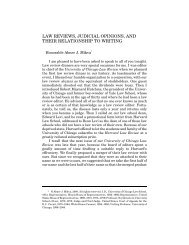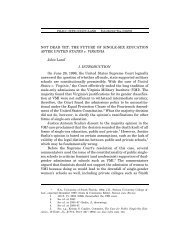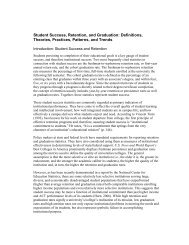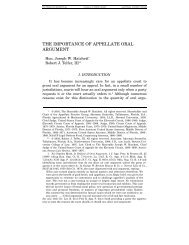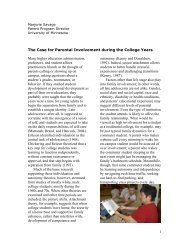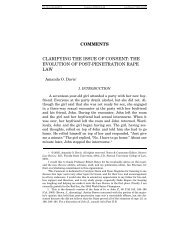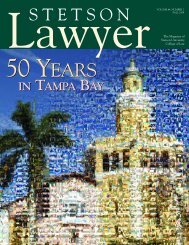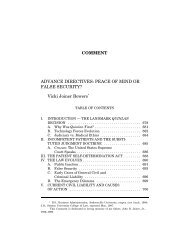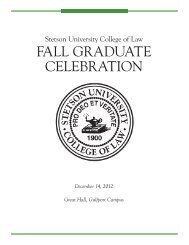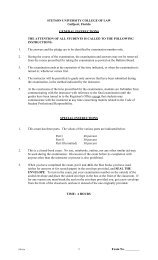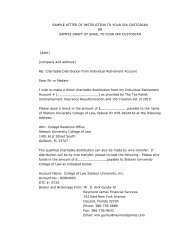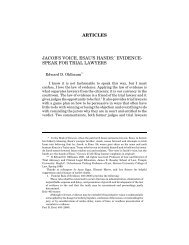TOWN OF CASTLE ROCK v. GONZALES: THE ... - Stetson University
TOWN OF CASTLE ROCK v. GONZALES: THE ... - Stetson University
TOWN OF CASTLE ROCK v. GONZALES: THE ... - Stetson University
You also want an ePaper? Increase the reach of your titles
YUMPU automatically turns print PDFs into web optimized ePapers that Google loves.
File: Hasanbasic.362.GALLEY(d).doc Created on: 9/25/2007 2:29:00 PM Last Printed: 9/26/2007 10:35:00 AM2007] Town of Castle Rock v. Gonzales 885Next, this Part will discuss the negative consequences that theCastle Rock precedent may create, including unnecessary and uninformedSupreme Court decisions, weakened state legislatures,and particular disadvantages to women. Part V will discuss thepossibility of fashioning a state-law remedy to the constitutionalproblem that was framed in Castle Rock. Finally, Part VI will concludethat the best remedy in Castle Rock lies in between the opinionsof the majority and dissent.II. HISTORICAL AUTHORITYThe central issue in Castle Rock—whether or not a state restrainingorder statute created a property entitlement to enforcement—wasan issue of first impression for the Court. 26 However,many sub-issues that were critical to the outcome of theCastle Rock decision did have precedent to provide guidance. Suchissues included whether or not deference should be given to lowerfederal courts’ interpretations of state law within their jurisdiction,27 how to interpret restraining order statutes with mandatoryenforcement language, 28 and what factors have historically beenused to determine whether or not a property entitlement exists. 29Additionally, the Court addressed the issue of whether or not anindividual may be entitled to state protection under substantive,rather than procedural, due process in a prior case. 3026. See id. at 755 (discussing the fact that the Supreme Court “left a similar questionunanswered” in DeShaney, due to the petitioner’s failure to preserve the issue on appeal).27. See id. at 757 (demonstrating the majority’s view that deference to lower federalcourts as to state law “can be overcome”); id. at 775 (giving examples of cases applyingdeference) (Stevens, J., dissenting).28. See id. at 782–783 (discussing cases with similar statutes at issue from other jurisdictions)(Stevens, J., dissenting).29. See id. at 766 (showing the majority’s view that cases have implicitly requiredproperty entitlements to have some ascertainable monetary value); id. at 789–790 (listingseveral cases that have interpreted the requirements of property entitlements) (Stevens,J., dissenting).30. See id. at 755 (stating that “[w]e held that the so-called ‘substantive’ component ofthe Due Process Clause does not ‘require the State to protect the life, liberty, and propertyof its citizens’” (quoting DeShaney, 489 U.S. at 195)).


